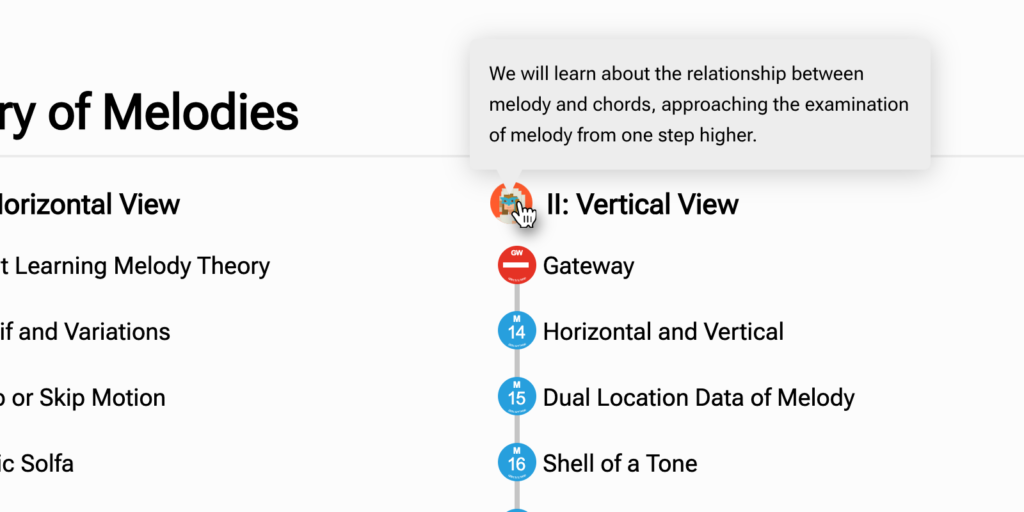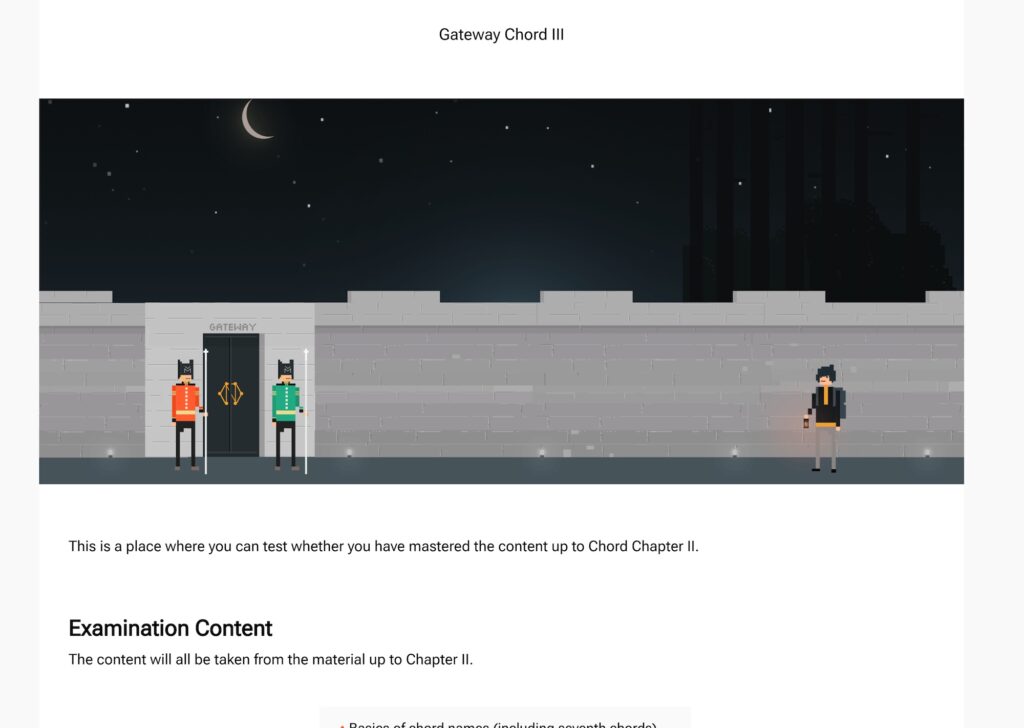Contents
1. Let’s Plan
Now, welcome to Liberal Music Theory! But the total number of articles here is…immense. So this section shows some model cases of studying pattern. You can skip this article if you don’t care of planning things!
Cycle of 3 Steps
Chiefly there are 3 things to rotate in learning music theory.
Learn music theory, analyze existing songs and compose actual songs. The balance of the three is important.
1 Knowledge, 1 Practice
As a basic criterion, it is suggested that you write one song (just a small piece is fine) when you learn one tip of knowledge.
Your brain can absorb new knowledge super-fast, but your ears cannot. There is a high chance that while you can understand what the text says (like “This chord creates the feel of XXX”), you cannot clearly perceive that feel through your ears. Since training an ear for music is physical task just like muscle building, it inevitably needs time to grow.
So you should see this text-based learning not as the end of studying, but rather the start of it.
2. Routings
The main part of the text is organized in “chapters“, which roughly represent degrees of difficulty.
Each chapter has a distinct theme and getting to next chapter means a bit of leap in its difficulty. By hovering over the icon for each chapter, you can get a brief description of that chapter.
Free Routing Study
SoundQuest offers free-routing study, that is, you can start from whichever chapter you like: “Melody”, “Chord” or “Rhythm”.
But there are some limitation of order e.g. Melody Ch.II requires knowledge in Chord Ch.I.
These preconditions are notified at the top of an article.
Where to Start?
Routings are freely customized but you may wonder where to start. As to Chapter I, the recommended order is Rhythm → Melody → Chord.
This is simply in order of its difficulty. Chord theory, as you may imagine, is more difficult than the other two. So starting with the theory of melody or rhythm and getting used to music theory may ease your pain of learning chord theory. “Rhythm” part is also easy in that there are no sheet of score used for explanation!
Set Your Goal
As already mentioned earlier in this chapter, you don’t have to learn everything written here in the website. It’s a clever strategy to quit at some point. So taking some major genres as examples, I’ll show you to which chapter you should study.
For several genres, Chapter I is enough! But, you know, it depends. It depends on what music you specifically try to make. A good way to adjust your goal is analyzing songs you love. If most of the techniques used there fits within your knowledge, then it will be the time to stop learning.
Gateway
In several chapters, the journey of study begins from a checkpoint called “Gateway.”
The Gateway serves as a section where you can test your grasp of the preceding content in a quiz format before moving on to the chapter’s material. Various types of music theory questions are presented, including multiple choice, sorting, and listening exercises.
This feature is provided with the heart of “better to have it than not,” and achieving a high score on these tests is not essential to proceed with the reading. Since it’s a review of previous chapters, questions may cover material not directly related to the chapter to go.
As mentioned earlier, while knowledge can be acquired quickly, developing your musical ears takes time. Therefore, it’s common to encounter situations where one might excel in written exercises but struggle with listening ones. In such cases, developing ear skills may be deferred as a long-term goal, and one may choose to proceed to later chapters. Of course, opting not to use the Gateway is also a valid choice.
You can check your past performance from the “My Gateways” page, which is accessible from the sidebar menu.
Whatever course you choose, the most important notice is not to hurry. Practice is crucial in learning theory. If you read through all the articles, it may well take 4 years. It doesn’t mean 4 years to literally “read” the articles. It means that if you run the cycle of learn/analyze/compose music, no wonder you get 4 years older when you reach the last page of the text. Slow and steady wins the race!


